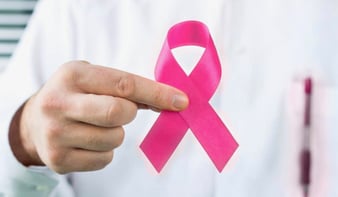 A breast lump or mass is just one of the possible signs of breast cancer. Breast cancer can cause several additional changes to the skin on and around the breast.
A breast lump or mass is just one of the possible signs of breast cancer. Breast cancer can cause several additional changes to the skin on and around the breast.
In some cases, breast cancer may not cause any symptoms, but a doctor will identify a mass on a mammogram. Screening for breast cancer as recommended by a doctor can help detect this condition in its earliest and most treatable stage.
All of these symptoms can also have a noncancerous underlying cause. However, people with these symptoms should speak to their doctor in case tests are necessary to check for both noncancerous and cancerous conditions.
1) Changes in the skins structure
Breast cancer can cause changes and inflammation in skin cells that can lead to texture changes. Examples of these texture changes include scaly skin around the nipple, as though the skin is sunburned or extremely dry and skin thickening in any part of the breast.
2) Nipple discharge
A person may observe discharge from the nipple, which can be thin or thick and can range in color from clear to milky to yellow, green, or red.
It is normal for people who are breastfeeding to have a milky discharge from the nipples, but it is advisable to see a doctor about any other nipple discharge.
Although most nipple discharge is noncancerous, it can signify breast cancer in some people.
3) Dimpling
Skin dimpling can sometimes be a sign of inflammatory breast cancer, an aggressive type of breast cancer. Cancer cells can cause a buildup of lymph fluid in the breast that leads to swelling as well as dimpling or pitted skin. It is essential that anyone who notices skin dimpling speaks with a doctor.
4) Lymph node changes
Lymph nodes are small, rounded collections of immune system tissue that filter fluid and capture potentially harmful cells. These include bacteria, viruses, and cancer cells.
If a cancer cell leaves the breast, the first place it travels to is the underarm lymph node region on the same side as the affected breast. This can lead to swelling in this area.
5) Breast or nipple pain
Breast cancer can cause changes in skin cells that lead to feelings of pain, tenderness, and discomfort in the breast. Although breast cancer is often painless, it is important not to ignore any signs or symptoms that could be due to breast cancer.
6) Nipple inversion
Breast cancer can cause cell changes behind the nipple. These changes can result in the nipple inverting and reversing inward into the breast, or it may look different in terms of its size.
The appearance of the nipples can often alter during ovulation or other parts of the menstrual cycle, but people should see a doctor about any new nipple changes.
7) Redness
Breast cancer can cause changes to the skin that may make it appear discolored or even bruised. The skin may be red or purple or have a bluish tint.
If a person has not experienced recent trauma to the breast to explain these changes, they should see their doctor. It is also vital to seek medical advice if breast discoloration does not disappear, even if trauma was the cause.
8) Swelling
Breast cancer can cause the entire breast or an area of the breast to swell. There may not be a distinct lump after this swelling, but the breast may be different in size than the other breast.
Although it is possible for people to have breasts that are slightly different in size at all times, this swelling would cause a change from their usual breast size.
The skin may also feel tight due to the swelling.
In conclusion, breast cancer can cause signs and symptoms that include changes to the skin on and around the breast. While many conditions can potentially cause breast changes, including cysts, infections, eczema, and dermatitis, a person should not automatically rule out breast cancer.
Seeing a doctor for evaluation and diagnosis can help determine whether or not any breast changes are cause for concern.

